Even fans of Home Alone can tell you that when your home is your castle, you don’t need to worry about trying to live out of bag. But there is a huge difference between a problem that lasts only two or three days and a complete social collapse.
More, the kinds of situations that lead to a major social collapse are also likely to render at least some parts of your home inaccessible. For example, in a major flood, you will need to shelter upstairs, while a nuclear explosion or tornado coming through will dictate moving into the basement.
While caching a limited number of supplies throughout the house may be of some help, there is still a core of tools and vital materials that should be with you at all time.
Read the following article, and have a look at some other reasons and ways that a bug in bag can be very useful in a time of need and even now as you begin preparing for total collapse scenarios.
Easier to Hide Away and Protect From Home Invaders
Consider a situation where you live in an area where your home is constantly being broken into. To add insult to injury, you may not be able to get a gun because laws in your area favor criminals instead of good and honest people.
Needless to say, in a crisis scenario, any rogue that decides to invade your home will have plenty of time to go through everything and take what they want. Under these circumstances, you may not even want to think about how much worse the situation will be in a total social collapse.
You may also be feeling very frustrated because you already know that storing away goods and supplies to help you during an emergency will be virtually impossible. On the other hand, a small bug in bag weighing less than 30 pounds may be fairly easy to tuck away in a place that would be overlooked by home invaders. As long as you are able to keep it hidden and secure, then you can have confidence in knowing that you can get by until the situation resolves.
In a home invasion and crisis situation you may have one psychological advantage in the sense that you know what you are guarding and how important it is. If you have followed advice about keeping a low profile and creating optimal fire zones, then you may just be able to protect your bug in bag or escape with it before the situation gets worse.
Even if you cannot have or get a gun, there are plenty of small things that are far more lethal that can be placed in your bug in bag. Just look at how easy it is to make a Molotov cocktail or other lethal explosives. While you may not relish the idea of basically exploding a bomb in your home, it may be just enough to enable you to escape or encourage those home invaders to leave.
Reduce Immediate Budget Strains Associated with Prepping
If you do some research, you will find that in some areas, the price of bottled water is doubling and tripling. By the same token, failing crops and other problems are also sending food prices upward. Aside from these basic budgetary problems, you will also find that the best and most recommended survival gear tends to be very expensive.
No matter whether you are talking about independent power generation, suitable clothing, guns, ammunition, or storage containers, each item can cost well over 100.00. When you can barely afford to pay the rent or put food on the table, chances are you also won’t have money for the more conventional purchases associated with prepping.
On the other hand, a well designed bug in bag can cost well under 250.00, including all of the tools and supplies. Here are some other ways that focusing on building a bug in bag can help you save money now and in the long run:
- A bug in bag can be as simple as a regular backpack that can carry 30 – 60 pounds of weight. I have been known to take a 15.00 backpack and use it for years on end to carry heavy items. While some people would never attempt this without a bar system on the back part, you can still use a basic backpack for a bug in bag and be able to mobilize with it if needed. As an added bonus, choosing a backpack without rails will make it much easier for you to fit into the landscape of people. Without a question, if rioters or thieves see you running around with a more expensive backpack, they are sure to think you have something of value in it. On the other hand, if your bug in/out bag looks old or “regular” they won’t think you have anything of major value in the pack.
- Focusing on small tools can save money and give you a wider range of versatility. As a prepper you may spend a good bit of time in the tool department. While you are wandering around, you are sure to appreciate all those battery operated power tools (even though they don’t work nearly as well as corded ones!) and boxes of fancy screwdriver, pliers, and multi-piece tool kits. On the other hand, my personal tool kit that I have used for an endless variety of chores and projects can fit into a much smaller space. For example, my screwdriver kit includes a regular sized ratcheting handle and a second one for smaller spaces (each one cost about $3.00 and came with a bunch of bits). Bits for these screwdrivers can be purchased for about a dollar a dozen, or upward depending on the quality of the bits. As an added bonus, I also have sockets, star bits, and a few others that can be used on just about any fastener. A monkey wrench, coping saw, mini hacksaw, metal cutter, two regular pliers, one needle nose pliers, tweezers, hammer, level (you can get one for about a dollar and then take it out of the frame), floral wire, multi-meter, composite file, 2 xacto handles plus blades, and tape measure round out my basic tool kit. Even at today’s inflated prices, you can build a mini-tool kit like this one for well under 30.00 and have no problems carrying it around in your bug in bag. In fact, even when I was commuting long distances, this exact kit served as a main part of my auto emergency kit and went with me no matter where I went.
- A bug in bag gives you a focus point to start with and the flexibility to change your plans if needed. When you only have a few dollars to work with, it can be very frustrating to purchase something and then realize that it won’t suit short term, let alone long term survival needs. At the very least, if you start off with a bug in bag, you can test out each piece and see how it fits into your pre-crisis lifestyle as well as how you will use it during and after a major crisis scenario.
- Creating a custom bug in bag is cheaper and better than buying a pre-packed kit. For example, if you buy a bug out bag, it may contain all kinds of hunting and navigation gear, and perhaps even some toilet paper and a transistor radio. On the other hand, these same pre-assembled bags may not include good quality tools or other resources that you can purchase for less and store away in a bag of your own choosing. As you develop your own bug in bag, you will also get to know how to use every part of it and actually practice enough to feel confident of your skills no matter what happens.
You Can Live in a Smaller or More Limited Space if Needed
Depending on the situation, the building you are living in may still be in relatively good condition after a major crisis occurs. Sadly, supporting community systems such as municipal water, gas, and electricity may all be temporarily or permanently disrupted.
To make matters even worse, structural damages to the building you are in may not be severe enough to warrant repairs, yet still limit your ability to use certain rooms. Under each of these circumstances, you may wind up having to bug out.
Even if you can travel to a friend or family member’s house, it may not be possible to take along a large stockpile. At the very least, if you have a well stocked bug in bag, you can live in your home for as long as you choose or bug out at a moment’s notice. Here are some other ways that a bug in bag can help you survive in a smaller space:
- A small, alternative powered dehumidifier can provide enough water for cooking and cleaning even if no other water is available. This is especially important if you already suspect that your home will be one of the first that rioters and looters will come to visit. In most cases, if you have water on hand, they will take that first. As long as they don’t see or know about your bug in bag, they will not be able to steal the dehumidifier that has far more value than the water they just stole.
- Solar power packs can be used to generate enough electricity to charge batteries or directly power a range of devices. If you do choose to purchase a solar power pack, make sure that you can also charge any batteries that may be used in medical devices.
- A box (after you unfold it) and some tinfoil can act as a solar oven that can be used to prepare food or heat up a room.
- Seeds packed away in the bug out bag can be started and eventually produce crops that can be consumed for food and medicinal purposes. If you need food within a few days, do some research on beans and other plants whose seedlings can be consumed after sprouting. In some cases, these sprouts can be started in little more than a moist paper towel and be ready to consume in under 48 hours. Chances are, you will be amazed at just how many sprouts you can get from a pound of alfalfa, cress, or bean seeds! Just make sure that you store away plenty of viable seeds so that you have enough to last several days plus enough seeds to produce a harvest.
- You can also store away ant eggs and other insect eggs that can be used to raise edible insects. Depending on what you choose, an area as small as a shoebox can be used to raise these insects. Aside from increasing your range of foods, insects are some of the most nutritious, protein rich foods that you can consume. Once you get past the “ick” factor, you may just decide that you never want to go back to commercial meat and all its toxins. As with a dehumidifier, rioters and looters may not think seriously about a bug farm sitting in your living room or other areas. In fact, if you really want to stir up rioters and other hostile invaders, it may be to your advantage to raise some stinging insects or others that will attack as soon as rioters are foolish enough to disturb their home. No doubt, if you have ever seen fire ants swarm, or other insects that attack en masse, then you can truly understand how these insects can help you fend off invaders while others can be used for food.
- When used in conjunction with fire zones, pen guns, darts, poisons, rope, wire, and other small weapons can be of immense value. A good array of these weapons usually weight less than a pound and can fit into something as small as a salt box. Not only will you have the element of surprise if someone invades your home, you can build all of these devices for just a few dollars. As an added bonus, no matter how much anti-gunners try to limit your access to conventional guns, there is nothing they can do about non-metal bearing weapons that you build at home and in complete privacy.
- A backpack with two side pockets offers the perfect way to make cheap, lightweight Faraday cages. These side pouches can be used to store away tiny FM radios and smaller sized smart phones that would otherwise be destroyed in an EMP blast. If you have a lot of information stored on your computer, a good quality unlocked WiFi phone with expandable memory (don’t forget to copy all your files onto the chip that you will use with the phone) can be used to store and access this information. Even though you should always strive to learn as much as possible and remember it all, it never hurts to have a backup data source. Just make sure that you choose a phone that can be switched out to a custom Linux variant. This will help improve your overall security and make it harder for others to find you.
- If you make a list of the basic needs of daily life, you are sure to find cheap, small devices that will fit into a bug in bag and make it entirely possible to live for weeks or even months without ever leaving the building. While this is sure to be psychologically taxing, at least you will be able to weather the weeks and months after the post crisis period with as little contact as possible with others who may be carrying dangerous diseases or exposing yourself to other problems.
Try out Different Tools and Equipment to See What Works Best
Have you ever purchased a clearance sale first aid kit or something else that looked like it might be of use some day? Did you get a nasty surprise when you opened up the kit or actually tried to use what you bought in an actual situation.
If so, then you can well understand what it will be like when a crisis happens and you try to use an array of items and tools that either don’t work, or you have no skill with using. In this case, a bug in bag can help you practice with a relatively limited number of tools and supplies. If something doesn’t work, you can do some more research and find something that will.
Ultimately, you should make it your business to try and live for at least 3 months exclusively on the resources housed in your bug in bag. Once you find things that work, you can always replace what you use, or better yet, in the case of plant seeds and insect eggs, simply store away extras from your harvests.
When you start using the tools and supplies in your bug in bag before a crisis happens, you may also find that it will change your life and daily habits. For example, after a few months of eating plant sprouts from heirloom seeds or insects that do not contain all kinds of commercial meat hormones and toxins, you may be looking and feeling much better than expected.
If you find something that works well for you, there is no need to go back to other food sources that cost a lot of money and rob you of your good health at the same time.
By the same token, as you become more adept other tools in your bug in bag, you will have more confidence in your ability to take care of household repairs. Once again, not only will you save money, but you will also be able to streamline and simplify your life in some very satisfying ways.
Important Items Will not be Overlooked if You Must Leave
No matter whether you have to take refuge in an attic, basement, or closet, chances are you will still panic after a major crisis occurs. Under these circumstances, you may forget even the simplest things that will not be easy to gather up once you go to a safer location within your home. On the other hand, if your bug in bag is within easy reach, all you need to do is grab it and take it along with you.
It should be noted that the bulkiest part of your bug in bag is going to be dedicated to clothes. This will also be the most expensive part of your kit since you will need to focus on thin fabrics that either keep you warm or help you stay cooler.
Oddly enough, many people give very little, if any thought to how they will manage clothing during a crisis. Consider a situation where you need to leave town quickly. As you look through your wardrobe, it is very likely that you will pull out (and pack) the worst possible clothes.
For women, this may include high heels, dresses, and other fancy garments that are completely useless for hiking, climbing, kicking, punching, and running. By the same token, men may be tempted to pack hats, ties, and other clothes that are relatively useless outside of a particular social context.
When you have a few basic garments stashed away in your bug in bag, at least you won’t have to worry about trying to dig through your wardrobe, the clothes you just washed, or the laundry hamper.
There is no question that bugging in can take a lot of work and preparation. All of that can go to waste if rioters and looters get into your home and steal everything before you have a chance to use it up in the post-crisis world. By the same token, structural damage, loss of utilities, and other factors can make it even harder to bug in without having a good quality bug in bag.
By outfitting a bug in bag now and practicing with it, you can be assured that you can live just about anywhere, including just one room or part of a room within your home. Why should you go through all the trouble of making sound and reasonable bug in plans and then overlook one part of the prepping process just because it is traditionally associated with bugging out?
Interested in long-term survival? CLICK HERE to find out more!
This article has been written by Carmela Tyrell for Survivopedia.


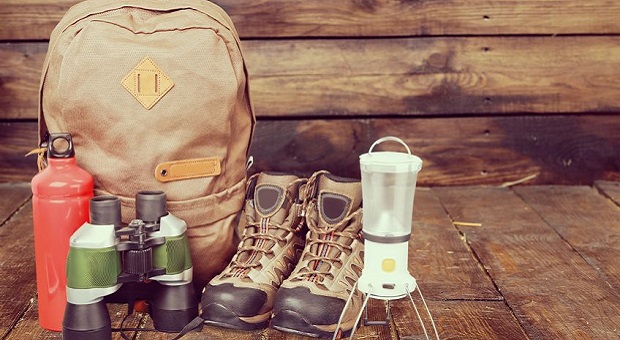
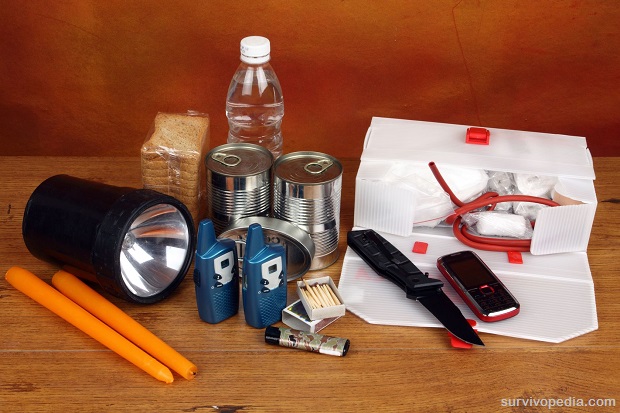
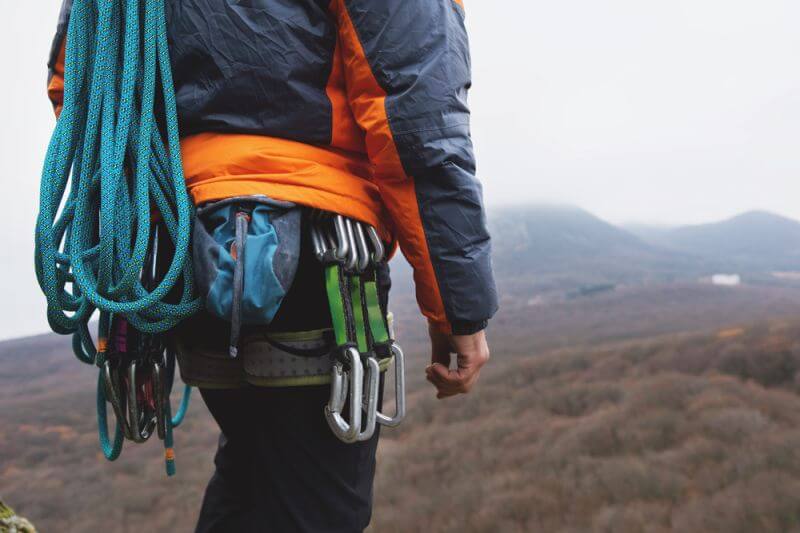

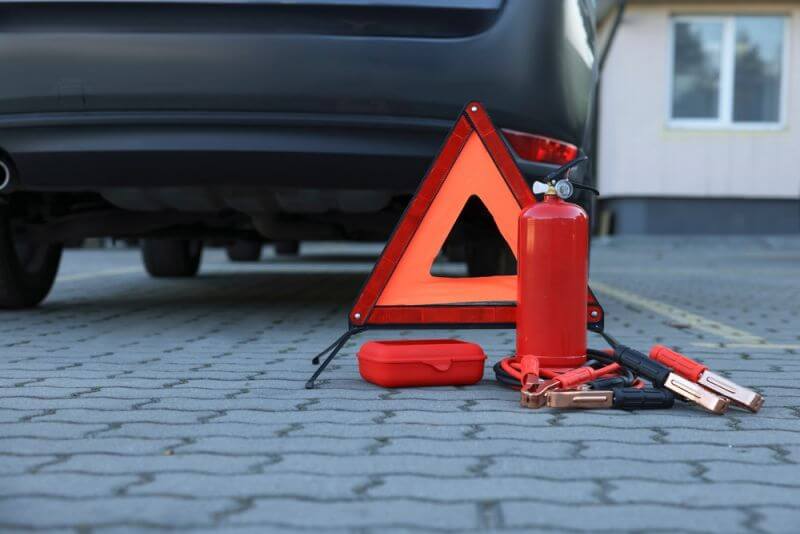
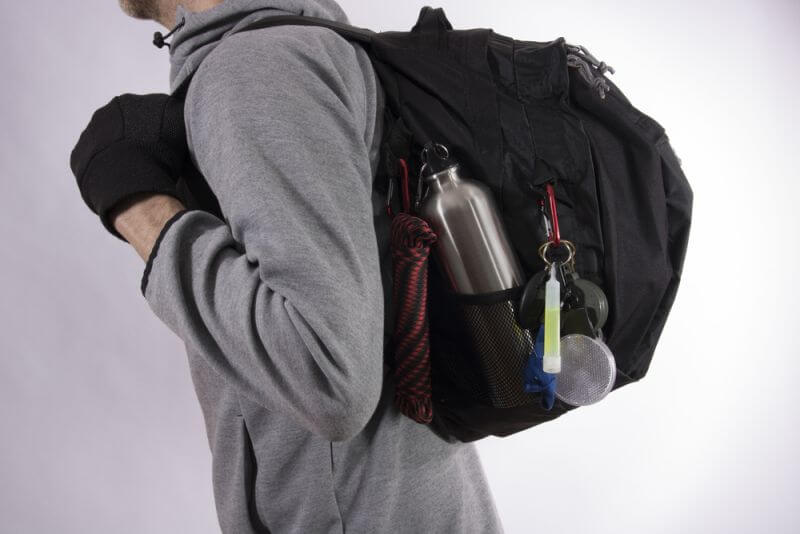

Pingback:5 Reasons To Make A Bug In Bag - Survivalot | October 26, 2015
|
Pingback:5 Reasons To Make A Bug In Bag | Freedom Newz | October 26, 2015
|
Pingback:5 Reasons To Make A Bug In Bag - Survival By Preparedness | October 26, 2015
|
Patricia | October 26, 2015
|
I love this article. My husband and I aren’t able to bug out. We’re too old to live outside anymore, even camping from our car. We have the skills, and have done it before, but our bodies don’t cooperate anymore. So we’re teaching ourselves home survival skills. We live in a trailer park and grow a bit of a garden, know a bit about foraging, and know how o survive where we are without electricity. We wish we had permission to raise chickens, though. I wouldn’t mind turning our storage shed into a coop.
carmela tyrrell | October 27, 2015
|
Patricia,
I’ve been thinking a lot about these things too, and looking around and seeing just how many buildings won’t survive a hurricane, tornado, earthquake, etc. That, and all the regulations that stop people from growing their own food – both plant and animal based.
Having lived in places with floors and roof caving in, unsteady stairs etc, I figured maybe some of what I learned would be useful for a bug in scenario. So – you will be seeing a lot more on these topics. I hope it is of use to you and other readers that would like to be prepared for a crisis but feel like there is no place to start and no way to proceed. Not everyone will be able to sit on a big homestead, there are so many that will be trapped in cities or limited to just one room.
Mac | October 26, 2015
|
Good article, most folks only think about bugging out. I use the idea that all items in my kits must be of duel purpose or they don’t go in the bag
just john | October 26, 2015
|
Why not just call them a “Be Ready Bag”??
George Snyder | October 26, 2015
|
With so few comments seen here, I wonder if you are taking away freedom of speech? Are people not allowed to express truth here?
Andy Sobien | October 26, 2015
|
First of all there are virtually no basements in California and many other states.
As to raising bugs to eat I would rather resort to eating targets of opportunity that came my way. Anything organic would qualify and that includes looters.
INVSBLTY | October 26, 2015
|
A lot of good info! But! How much does all this weigh? I have a BOB but it’s too darn heavy to run with…and how far will I be comfortable just hiking with it? And the kicker is, not all the gear I need is in there, and no food! Very incomplete bag, and I hear that this should be added, and remember to bring along one of these, and one of these, etc!
carmela tyrrell | October 27, 2015
|
Invsblty,
When I added 2 means of food production, a handgun, and a means to draw water from the air, the weight ranges for the bug in bag came at 60 – 138 pounds. The minimum side is routine for military soldiers. I routinely carry 50 while walking 3 – 6 miles a day – and I’m not in stellar shape, nor am I in my 20’s. So – on the lighter side it can be done – not easy – but can be done.
Big D | October 27, 2015
|
It is ridiculous to assume that every body can just grab a bug out bag and head to the country. You will have thousands dead and starving. It does not matter what you have in your bag, you cannot carry enough to survive on unless you are a very, very experienced outdoorsman. You need to have a place with shelter and stores of food, water, firewood and all kinds of supplies. Your best bet is to know someone who lives in a rural area (farm, ranch or acreage) that is willing to have you come and live with them or purchase a place of your own. If you cannot afford this, then get together with other survivalist groups and become part of a group that is preparing to meet the crisis on hand. Please stop preaching that a BOB will save everyone. It won’t! Stay prepared my friends.
Mama Roo | November 6, 2015
|
We all have to start somewhere… Meaning a small bag of necessities travel clothing, water and purifier, a poncho that can be used as a tarp, died fruit and nuts, a solar blanket, matches, fire starter, tea tree oil, yoga mat and tiny pillow, twine, first aid kit, work gloves, toilet paper, map, pocketknife with tools, mineral rub for muscle aches, soap,baby wipes, spare set of underwear, a Bible, glasses, and combination canvas sun/rain hat, etcetera. My husband and I camped on our honeymoon which was rough but we are still camping at archery shoots for our vacations-cheaper and more fun than staying in a motel. We are not young any more but enjoy the challenge and sometimes lose 5 pounds on a 4-5 day camp out. I appreciate your articles …keep it up and God bless you
Pingback:5 Reasons To Make A Bug In Bag | TheSurvivalPlaceBlog | October 28, 2015
|
Kimberly | October 28, 2015
|
Really liked this article because I’m an amputee and have a 6yo child. It would be hard for us to “bug out” and I am new to the game with very,very little money. So information like this is helpful so please keep it coming. I have a question: how does one “stockpile” prescription meds for people with chronic conditions such as epilepsy, diabetes, high blood pressure.
carmela tyrrell | October 29, 2015
|
Kimberly,
That… is a really tough question. There are two paths you can take, and probably a combination of both is best in terms of long term survival and looking after the next generation.
First – medicines have a shelf life, so there is a time limit on anything you stockpile. How long you will have meds into the crisis period is anyone’s guess. If you can get a year or two ahead, then focus on an appropriate temperature (ex. some require refrigeration; most require cooler temps), humidity, and light levels (most medicines do best in a dry, dark place). Then… you have to protect the meds from being stolen or seized. They would fetch a high price in a disaster scenario, plus people with an illness are perceived as weaker, which increases the risk of being targeted.
Second option – get informed now about herbal remedies and make sure you can grow the ones you need plus use them to treat your conditions. Don’t just go by what is online, talk to doctors – two to ten of them if that’s what it takes to find one that is competent, has done the actual work of studying herbal medicine, and is willing to help you make a change to herbal medicines. Look also for underlying heath problems – like leaky gut syndrome and medicine related side effects that the doctor may not be focusing on or may not consider important. The nice thing about herbal medicines is they can be disguised in containers that have regular houseplants on the outer edges. For example, not many people arriving to seize medicine or food will care about a spider plant, etc. It’s just a background thing – but it may just hide parsley, basil, or other plants that you may be growing to treat an illness.
Pingback:Survival News 10/26/15 - Survival By Preparedness | November 3, 2015
|
Pingback:6 Things To Consider When Bugging In With Pets - Survival By Preparedness | November 8, 2015
|
Pingback:5 Reasons To Make A Bug In Bag - Apocalypse Supplies | November 27, 2015
|
Gary Showalter | February 3, 2016
|
I have travelled – and worked -any places around the globe. I seen utter poverty; it ain’t pretty. So I work at staying ready to hunker down or run like a little bunny as the situation demands. Your article is brilliant; filled with common sense ( which is not all that common any more) and some downright ingenius thinking.